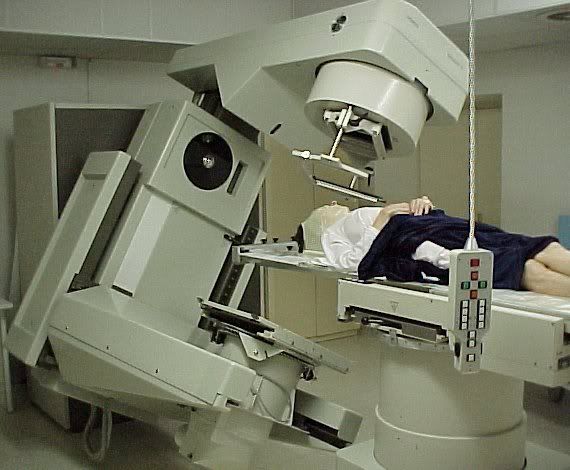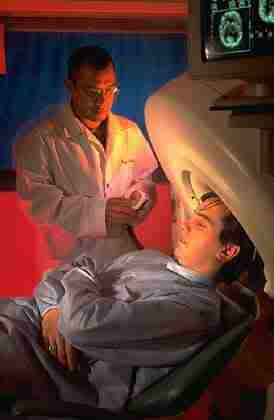Prognostic Significance of Paneth Cell-like Neuroendocrine Differentiation in Adenocarcinoma of the Prostate.
Tumors of the prostate with neuroendocrine differentiation represent a heterogeneous group of entities. Neuroendocrine differentiation in the prostate ranges from focal neuroendocrine cells (NECs) in otherwise conventional adenocarcinoma to carcinoid tumor to small cell carcinoma.
Small cell carcinomas of the prostate are rare tumors, which behave in a very aggressive fashion. Patients often present with metastases at the time of diagnosis and survival is usually very short, typically less than 2 years after diagnosis. Primary carcinoid tumors within the prostate are even less common. The majority of prostatic tumors that morphologically resemble carcinoids are acinar adenocarcinomas with bland cytology that express neuroendocrine markers, and yet also express prostate specific antigen (PSA) and prostate specific acid phosphatase (PSAP). These tumors are best regarded as acinar adenocarcinomas with neuroendocrine differentiation rather than true carcinoid tumors. The few true carcinoid tumors that have been reported have a better prognosis that small cell carcinoma, yet there are insufficient data on the true behavior of these lesions.
It is important to distinguish small cell carcinoma and carcinoid of the prostate from ordinary adenocarcinoma of the prostate with neuroendocrine differentiation. Neuroendocrine differentiation in the prostate may be unapparent on hematoxylin and eosin (H&E)-stained sections, detectable only by the use of immunoreactivity. NECs may also be visible on routine H&E-stained slides, where the NECs resemble Paneth cells in the small intestine. These cells, characterized by small eosinophilic cytoplasmic granules, are not true Paneth cells as they stain with neuroendocrine markers and are uniformly negative for lysozyme. Paneth cell-like NECs are occasionally observed in the normal prostate, high-grade prostatic intraepithelial neoplasia (HGPIN) and adenocarcinoma. The prognostic significance of Paneth cell-like neuroendocrine differentiation in adenocarcinoma of the prostate has not yet been established.
DISCUSSION
Endocrine cells in the prostate were first documented by Feyrter in 1951.
They have a common origin with the luminal cells, arising from endodermal-derived prostate stem cells. As opposed to luminal cells that are considered the proliferative compartment, NECs in prostate are considered terminally differentiated cells without proliferative activity. It is believed that they play a physiologic role in the maintenance of homeostasis and regulation of the prostatic fluid.
Prostatic NECs are more abundant in the major ducts and more sparsely present in acinar tissue. Two types of NECs can be distinguished: “open” cell type with a flash-shaped form and slender extensions reaching the lumen and “closed” cell type that lacks luminal extensions. Dense core granules within these cells store and secrete a variety of endogenously active substances, including serotonin, chromogranin, somatostatin, calcitonin, gastrin-releasing peptide, [alpha]-human chorionic gonadotrpin, thyroid-stimulating hormone-like peptide, parathyroid hormone-related protein, cholecystokinin, and others.
NECs are androgen insensitive, lacking the androgen receptors seen in luminal cells. Some authors speculate that this property could make them potentially immortal and less susceptible to radiation and hormone therapy, potentially conferring on them a survival advantage. A number of clinical studies suggested that NECs might play a role in prostate cancer development or progression stimulating the growth of the surrounding carcinoma cells in a paracrine fashion through an androgen-independent pathway.
Previous studies have shown controversial results regarding the prognosis of focal neuroendocrine differentiation as demonstrated by immunohistochemistry in otherwise typical adenocarcinoma of the prostate. Some reports have shown a negative effect on prognosis although others have shown little or no relationship to prognosis. Whereas prior studies evaluated the prognostic significance of neuroendocrine differentiation based on immunohistochemical markers, the significance of Paneth cell-like differentiation has not been evaluated.
Paneth cell-like NECs are positive for neuroendocrine markers and negative for lysozyme, making them distinct from the true Paneth cells of the small intestine. Electron microscopy studies reveal, within the cytoplasm of Paneth cell-like cells, dense core neurosecretory granules.
The most common pattern seen in the current study with Paneth cell-like change was patchy NECs in malignant glands. In addition to the common finding of patchy NECs in malignant glands, NECs were also seen as single cells, cords, or nests of cancer cells with no luminal differentiation. Although by the Gleason system these were graded as pattern 5, their bland cytology, typically limited nature, and frequent association with lower grade conventional adenocarcinoma raised questions as to whether this unique histology should not be diagnosed as high grade. Their association with ordinary adenocarcinoma in all but 2 cases argues against designating these foci as carcinoid tumor. One of the 2 cases with pure Gleason pattern 5 composed of NECs had focal PSA immunochemistry further supporting that these are variants of adenocarcinoma of the prostate and not carcinoid tumors. Most cases with a high percentage of NECs were small foci of cancer such that it is unusual to have a lot of prostate cancer with a majority of the cells being NECs.
Although we did not compare the prognosis after radical prostatectomy for cases with NECs to a control population without NECs owing to the limited number of cases with NECs, we were able to conclude that the presence of NECs on needle biopsy or within radical prostatectomy specimens did not invariably indicate aggressive tumor. Cases with NECs had organ confined cancer in 62.5% of cases with only 31.2% of cases having positive margins. In only 4 cases, seminal vesicles were positive for cancer. Pelvic lymph nodes were free of tumor in all cases. The postoperative course was also very favorable with an over 90% actuarial PSA progression-free risk of 5 years. The prognosis seemed to be driven by conventional parameters independent of NECs. The only 2 patients who progressed after radical prostatectomy had Gleason score 7 cancer with extraprostatic extension and seminal vesicle invasion, with one also having ductal differentiation and positive margins.
This study brings to attention the potential problem that could arise in grading tumors with Paneth cell-like changes, when areas of the tumor consist of isolated cells or cords of cells resembling a carcinoid tumor. Despite the cells' bland histologic appearance, strictly applying the Gleason grading system one would have to assign a Gleason pattern 5 to these foci with no glandular differentiation. The current study demonstrates that applying the Gleason score to these foci does not accurately reflect their clinical behavior.
In cases with Paneth cell-like NECs, only the conventional adenocarcinoma component should be assigned a Gleason score. In cases in which the entire tumor is composed of Paneth cell-like cells and areas of the tumor lack glandular differentiation, the tumors should not be assigned a Gleason score and a comment should be provided as to the generally favorable prognosis of this morphologic pattern of neuroendocrine differentiation. From a practical standpoint, one should not use, without further explanation, the diagnostic term “prostatic adenocarcinoma with neuroendocrine differentiation” to denote Paneth cell-like change in an adenocarcinoma, as we have seen such cases misconstrued by clinicians as small cell carcinoma.




0 Comments:
Post a Comment
<< Home